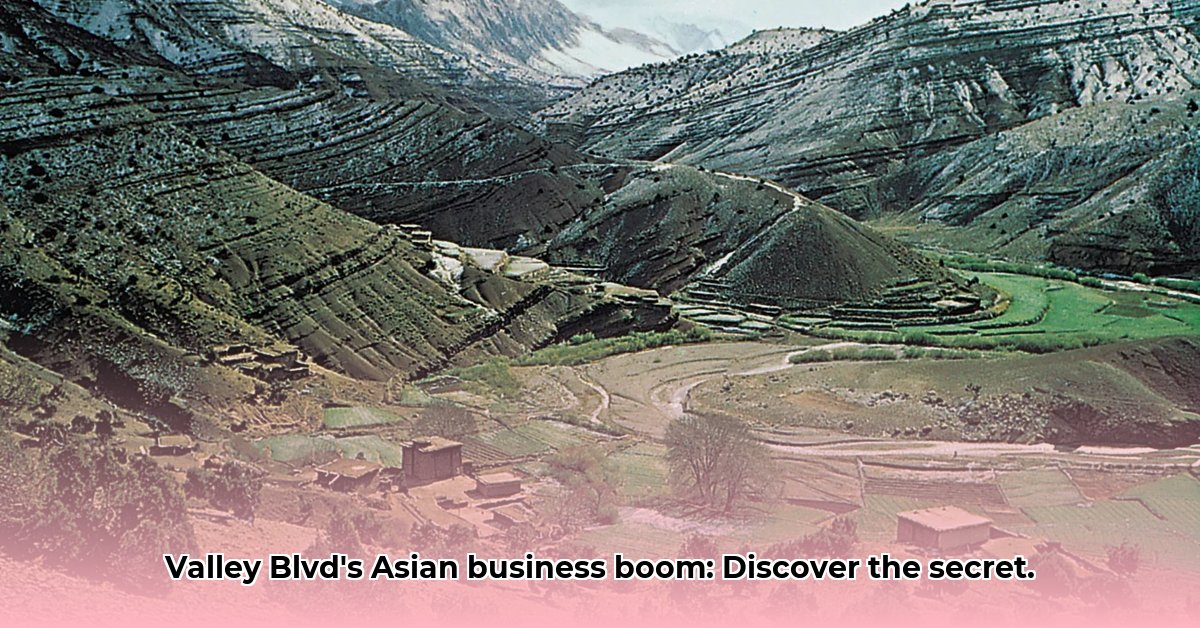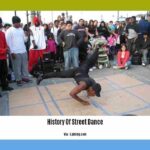Valley Boulevard is more than just a road; it’s the vibrant heart of the San Gabriel Valley’s Asian American community. For years, this bustling street has transformed from a simple thoroughfare into a thriving hub of culture and commerce. What makes it so successful? This informational article explores Valley Boulevard’s history, from its early days to its present-day status, including the challenges businesses face, its comparison to similar Asian business districts, and the strategies for future success in this dynamic marketplace. From the savory aromas of diverse cuisine to the unique architectural designs, Valley Boulevard offers a vivid snapshot of a community shaping its future.
Valley Boulevard: A Thriving Asian American Business Corridor & Immigrant Entrepreneurship
Valley Boulevard is a testament to hard work, resilience, and shared cultural identity. This vibrant thoroughfare weaves through the San Gabriel Valley, from Alhambra to Diamond Bar, seamlessly blending Asian American culture with commerce. It exemplifies immigrant entrepreneurship and celebrates community spirit. However, its continued success requires careful planning and strategic adaptation.
From Road to Regional Heartbeat: Tracing Valley Boulevard’s Asian American Business Roots
Valley Boulevard’s transformation began with Asian immigrants seeking opportunity and community in Southern California. They established restaurants, markets, and financial institutions, creating a natural gathering point for cultural exchange and economic activity. Accessibility and a welcoming environment fostered growth, intricately intertwining commerce and culture. The bustling night markets, Lunar New Year celebrations, and the daily hum of community life define Valley Boulevard today, showcasing its vibrant Asian American business roots.
This flourishing wasn’t spontaneous. It was built by determined entrepreneurs who faced challenges with unwavering hard work and cultural unity.
However, this success presents ongoing issues that require constant adaptation.
Navigating the Currents: Addressing Valley Boulevard Challenges and Ensuring Economic Sustainability
Valley Boulevard’s success demands constant negotiation and adaptation. It faces challenges, including increased competition that requires constant innovation, aging infrastructure that needs modernization, and gentrification that threatens to displace established businesses. These factors could irrevocably alter the corridor’s landscape. Can Valley Boulevard maintain its unique character while evolving to meet modern demands, ensuring economic sustainability while fostering a vibrantly diverse cultural experience?
Let’s examine different perspectives on these challenges and explore potential strategies to overcome them.
Charting a Course for the Future: Adaptation, Collaboration & Valley Boulevard Economic Development
The future of Valley Boulevard hinges on preserving its unique identity while embracing necessary change through collaborative efforts. Business owners, local governments, residents, and consumers all play vital roles in shaping its future.
Perspectives and potential solutions:
- Asian American Business Owners: Short-term strategies include enhanced digital marketing efforts and diversification of product and service offerings. Long-term success requires the formation of strong business associations to advocate for infrastructure improvements, navigate local regulations, and foster robust Valley Boulevard economic development.
- Local Governments: Strategic investments in modernizing roadways and public transportation infrastructure are essential to attract businesses and customers. Economic incentives and proactive, planned growth can lessen the negative impact of gentrification. A forward-thinking approach focusing on sustainable growth and cultural preservation is critical.
- Residents: Active community involvement and consistent support of local businesses are crucial to sustaining Valley Boulevard’s unique character. Advocating for responsible development and economic diversity ensures that community voices shape its future.
- Consumers: Proactive consumer engagement is crucial. Supporting local businesses directly contributes to their survival. Championing cultural authenticity helps to protect Valley Boulevard’s uniqueness.
A Roadmap for Sustainable Growth: Key Actionable Steps for all Valley Boulevard Stakeholders
Valley Boulevard’s continued success requires a collaborative, long-term vision. Here’s a breakdown of actionable steps, divided into short-term and long-term goals for each stakeholder group:
| Stakeholder Group | Short-Term Actions | Long-Term Actions |
|---|---|---|
| Asian American Business Owners | Upgrade online presence; explore diverse product offerings; actively seek community support. | Establish formal business associations; actively participate in local community advocacy; invest in employee training and professional development initiatives. |
| Local Government | Improve roadways and public transportation; review and modernize zoning regulations. | Invest in updated infrastructure; develop smart growth initiatives; implement specific policies to responsibly manage or mitigate the impacts of gentrification. |
| Residents | Support local businesses; actively engage in community events; voice concerns to local officials. | Advocate for sustainable development; promote affordable housing options; push for balanced infrastructure improvements that benefit all residents. |
| Consumers | Patronize local Asian American businesses; share positive experiences online; actively participate in cultural events. | Support policies that protect cultural heritage; encourage ethical consumption practices; engage in proactive community conversations about Valley Boulevard’s future. |
Valley Boulevard’s future is being shaped by the collective choices made today. Collaboration, innovation, and a deep appreciation for its rich heritage will ensure its continued success. It requires constant vigilance and a steadfast commitment to protecting its unique character. Its ongoing story reminds us of the interconnectedness of commerce, community, and culture.
How to Mitigate Gentrification Threats on Valley Boulevard Asian American Businesses & Community Empowerment
Valley Boulevard thrives with vibrant Asian American businesses, but gentrification increasingly threatens this unique landscape. How can we effectively ensure its economic engine continues to thrive and benefit the entire community?
Key Takeaways:
- Preserving existing affordable housing is crucial to prevent displacement and strengthen community empowerment.
- Community-led initiatives are essential to support local businesses amidst rising costs and increased competition.
- Targeted policy changes, such as tax freezes for long-term residents and incentives for mixed-income development, are urgently needed.
- Developers must actively include affordable housing in new projects and proactively engage with the community to address concerns.
Protecting Existing Businesses: Strategies for Lease Security
Short-term goals should center on supporting established businesses and prioritizing lease security. This is critical to sustaining the area’s unique cultural identity.
- Financial Assistance: Microloans and tailored support programs can help businesses effectively handle rising rents and increased competition.
- Community Marketing: Collaborative marketing campaigns can highlight the unique offerings of local businesses, boosting patronage and overall visibility.
- Lease Protections: Advocating for stronger lease protections will provide businesses with increased stability and security.
Long-Term Strategies: Building Economic Resilience on Valley Boulevard
Long-term strategies must focus on systemic change to build sustained economic resilience.
- Cooperative Models: Exploring cooperative business models can empower businesses to collectively address shared challenges.
- Economic Development Planning: Actively involving local businesses in the economic development planning process ensures that their valuable voices are heard and considered.
- Community Benefit Agreements: Negotiating community benefit agreements with developers ensures that new developments contribute directly to the community’s overall well-being.
The Role of Local Government and Developers in Valley Boulevard’s Future
Proactive municipal action is essential to stabilize businesses along Valley Boulevard.
- Property Tax Policies: Freezing or lowering property taxes for long-term residents can effectively prevent displacement.
- Affordable Housing Initiatives: Prioritizing and expanding existing affordable housing options is absolutely crucial.
- Incentivizing Mixed-Income Development: Incentivizing smaller, thoughtfully planned mixed-income developments creates more balanced and inclusive communities.
Developers must move beyond superficial gestures of inclusivity and demonstrate a genuine commitment to community well-being.
- Substantial Affordable Housing: Including a significant number of affordable housing units in all new projects is essential.
- Family-Sized Units: Building larger family-sized housing units addresses the specific needs of families who are most vulnerable to displacement.
- Community Engagement: Developers must actively engage with the community throughout the planning and development process to understand their concerns and ensure that projects genuinely reflect community values.
Without a concerted and collaborative effort from all stakeholders, Valley Boulevard’s vibrant cultural heart is undeniably at risk. Addressing the challenges posed by gentrification is not simply an economic imperative; it is essential to preserving a unique and irreplaceable cultural legacy.
Challenges Facing Asian American Businesses on Valley Boulevard’s Recovery Path
Valley Boulevard’s Asian American businesses faced unprecedented hardship during the COVID-19 pandemic, creating an urgent need for comprehensive economic recovery strategies.
Key Takeaways:
- Valley Boulevard is now experiencing a fragile recovery, and it is vital to critically explore the long-term impact the pandemic had on the community’s economic vitality.
- Over-reliance on Chinese tourism proved to be a significant vulnerability, necessitating diversification strategies to build a more resilient economic base.
- Larger, more established businesses generally demonstrated greater resilience, while smaller enterprises struggled with increased uncertainty and limited resources.
- Adaptability, proactive digital adoption, and a renewed focus on the local market are critical factors contributing to successful recovery.
- Targeted local government support and robust community initiatives are essential for long-term sustainability.
The Pandemic’s Harsh Reality: Reassessing Economic Diversity
The pandemic starkly exposed the challenges facing Asian American businesses on Valley Boulevard, as the sharp reduction in Chinese tourism significantly impacted revenue streams. Many shops stood half-empty, revealing a critical vulnerability and underscoring the urgent need to reassess and strengthen the area’s overall economic diversity.
A Pivot to the Local Market: Connecting with New Customers
The pandemic forced businesses to focus more intently on local customers. This meant rethinking traditional marketing strategies, embracing digital platforms, and reinventing the overall customer experience. While some businesses thrived by connecting with local audiences, others struggled to adapt, raising the critical question: can these businesses create a new, more
- How Plate Tectonics Will Reshape Our Planet: A 250-Million-Year Prediction - July 30, 2025
- Master Cognitive Biases: Better Decisions Daily - July 30, 2025
- Unraveling Mexico’s Zone of Silence: Where Radios Fail - July 30, 2025















